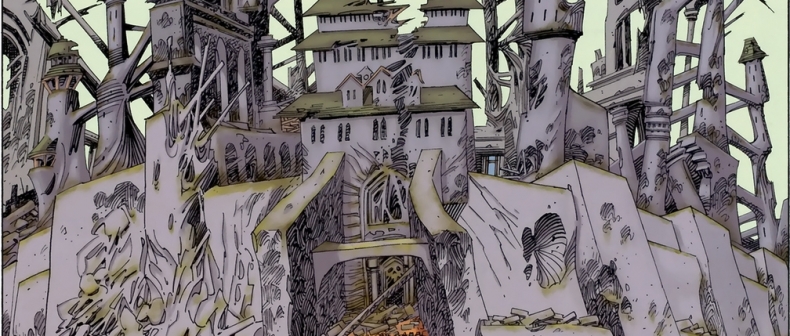
Text/Book, the Toronto Standard‘s books column, is written by Emily M. Keeler and Chris Randle, plus occasional guests.
I was never much of a Harry Potter initiate. I read the books, of course, because that’s what you did if you were a child in the late ’90s – I actually got to them a little early, finding British editions of the first three while visiting relatives in the UK. But after the publication of Harry Potter and the Goblet of Fire in 2000, which is when I dimly remember the hype and sales ramping up in earnest, I wandered away. It took three years for J. K. Rowling to continue the series, and by then I was more interested in dyeing my hair black and listening to punk bands. My family shepherded us to one of the later film adaptations several holidays ago; I eventually abandoned my idle attempt to follow the plot, like a daytripper on a hiking path, and settled for watching classically trained actors pay off their summer homes. On occasion my dad insists or teases that I look like the kid wizard’s movie incarnation, and it’s annoying, because Daniel Radcliffe is darker than me and at least six inches shorter and resembles an aroused owl.
There are even more perverse interpretations of the series, though. In the latest installment of League of Extraordinary Gentlemen, his series imagining Victorian pulp characters as an all-star superhero team, the comics writer Alan Moore cast Harry Potter as a tank-topped Antichrist. Having progressed from their original era to a grimly authoritarian present – the current volume of LoEG begins in a Brechtian 1910, leaps ahead to swinging London and closes in 2009 – Moore and artist Kevin O’Neill gradually winnowed the cast, until the only ones left were Mina Harker and the gender-bending Orlando. (So, at least when this last issue begins, “gentlemen” is a misnomer.) The nominal plot depicts magician Aleister Crowley – or rather “Oliver Haddo,” since every real person in this parallel universe, even Hitler, is represented by their fictional analogue – trying to raise a supernatural Moonchild and thereby bring about the apocalypse. That’s where Harry Potter comes in.
Haddo ends up possessing a sinister young instructor at a prominent magical school during the 1960s. By the time Harker and Orlando find the place decades later, it’s become a nightmarish hellscape, a desert of atrocities, the train that once conveyed students there gnarled with corpses. The copyright-skirting child of destiny evidently couldn’t handle destiny’s strain, turning on his would-be master and everyone else in a spasm of petty teenage rebellion. (He even rubs off that telltale scar.) When the desperate heroes find him, bulging with eyes in the same anonymous corner of London where Harry Potter begins, he’s preparing to end the world out of mere pique.
The anti-climatic nature of this Antichrist is intentional. Moore casts J. K. Rowling’s creation as the symbol of everything he finds wanting in contemporary culture; as Haddo-cum-Voldemort tells the prophesized wizard, just before he gets decapitated, “you really were a tremendous disappointment to me. You’re banal…” The writer makes sport of Harry Potter‘s derivative conservatism (“I assumed it runs on sloppily-defined magical principles,” one character observes while riding the horrific train to Hogwarts), but his own critique often sounds downright reactionary. Mina Harker: “People were desperately poor in 1910, but at least they felt things had a purpose. How did culture fall apart in barely a hundred years?”
LoEG: 2009 is less cohesive than previous issues, not even convincingly fragmented at times. One of its few vivid allusions is to The Wire, another series that recalls the past, if only in a formal sense – what could be more anachronistic than sprawling Marxist social realism? Yet subversion always remains near the top of Moore’s mind, even when he’s looking backwards, and that’s what gives his unwieldy allegory a certain idiosyncratic force. The mindless, lightning-ejaculating Pottermonster does get wiped out of young imaginations and England’s dreamtime by a character from a much older story, but in this telling the deus who arrives ex machina is a woman.
____
Chris Randle is the culture editor at Toronto Standard, not the guy who played Harry Potter. Follow him on Twitter at @randlechris.
For more, follow us on Twitter at @TorontoStandard, and subscribe to our newsletter.











